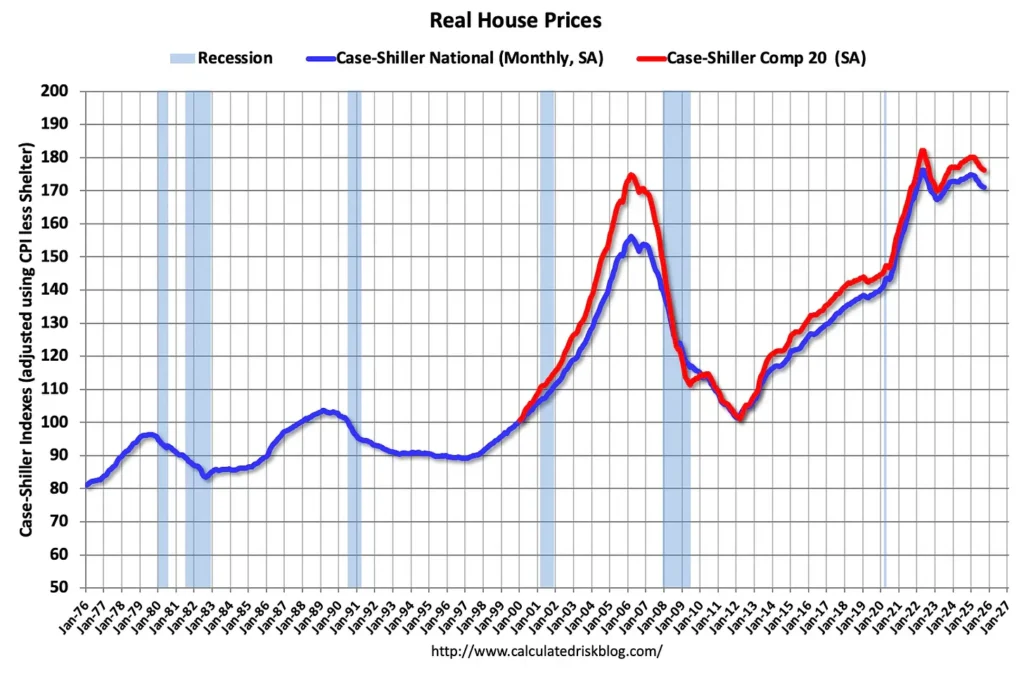From Yahoo Finance:
Housing market predictions for 2026: What buyers, renters, and homeowners can expect
If you’ve felt sidelined by the real estate market in years past, it’s fair to wonder whether 2026 finally looks different or whether it’s just another version of the same frustrations. The short answer is that the market does look calmer heading into 2026, but not dramatically cheaper or easier. Expert housing market predictions for 2026 suggest a market where preparation, flexibility, and local conditions are more crucial than chasing the perfect moment to buy, sell, or relocate.
…
As of Dec. 11, 2025, the average 30-year fixed mortgage rate sat at 6.22%, according to Freddie Mac. That’s progress compared to rates in 2023 and early 2024, but still expensive relative to the rock-bottom pandemic rates that are now in the rearview mirror.
Looking ahead to 2026, expert mortgage rate predictions largely agree on the direction, but not on the specifics. Many expect mortgage rates to go down in 2026. Zillow and Realtor.com point to mortgage rates in the low- to mid-6% range as inflation continues to cool. In its November Housing Forecast, however, Fannie Mae predicts that the 30-year rate will hit 5.9% by the end of next year.
What’s striking is how restrained those projections are. No one is talking about a return to mortgage rates in the 3% range. Not seriously, anyway. That era appears to be over, at least for now.
…
Most major housing forecasts indicate a market that’s slowing down, rather than reversing. Zillow’s latest outlook projects modest price growth, with national home values expected to rise about 1.2% in 2026. Redfin’s forecast falls within a similar range, predicting roughly 1% year-over-year growth as part of a gradual reset rather than a correction.
The reason prices remain resilient comes back to supply. Even as listings improve from recent lows, housing inventory still hasn’t returned to pre-pandemic levels.
That shortage isn’t uniform. In some markets, inventory has rebounded faster. In other areas, particularly across parts of the Northeast and Midwest, Realtor.com data shows listings still lag well behind 2019 levels. In those areas, competition hasn’t disappeared, even if it’s less intense than it once was.
…
This is where many 2026 housing market predictions begin to fall apart a bit.
On paper, the housing market already appears more favorable to buyers than it did a few years ago. Realtor.com’s November 2025 market data shows the typical home spent about 64 days on the market, roughly three days longer than a year earlier — the 20th straight month of year-over-year increases in time on market. Meanwhile, Redfin’s October national housing data highlights a market where sales and listings have barely moved, a sign that homes aren’t selling as quickly as they did during the pandemic-era frenzy.
That sounds like a buyer’s market. It isn’t — at least not everywhere.


